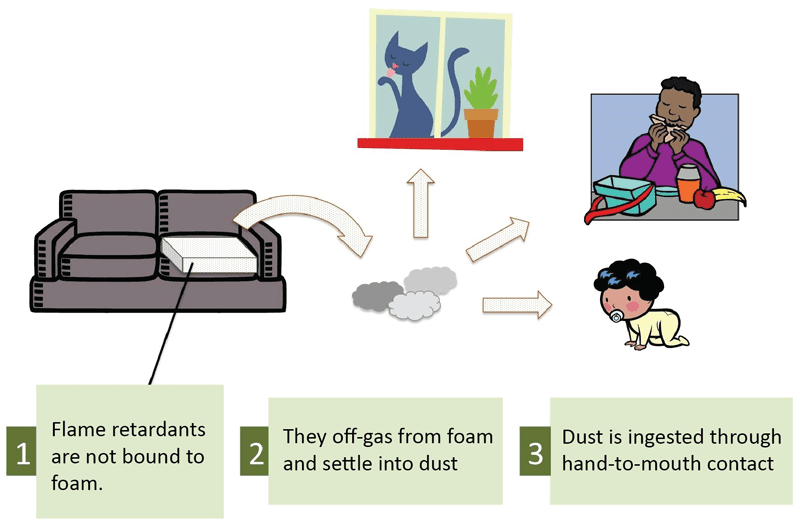In 2006, the use of certain flame-retardant chemicals was stopped due to their harmful effects. Despite the ban being lifted, these chemicals continue to have an impact today.
Pregnant women are among those most affected by these substances, as shown by recent research.
A study conducted on pregnant women in Northern and Central California analyzed blood samples for toxic compounds called polybrominated diphenyl ethers (PBDEs). The findings revealed that the PBDE levels in these samples were higher than those recorded in earlier studies from the United States and several other countries.
This raises concerns about ongoing exposure to these potentially dangerous chemicals.
Where are flame retardants found?
Exposure to flame retardants isn’t only a threat to pregnant women. Anyone exposed to flame retardants can be affected as flame retardants are found in several things of everyday usage.

These chemicals are present in items such as furniture foam, children’s products, electronics, car seats, textiles, fabric blinds, coatings, paints, transportation interiors, and building insulation to meet flammability standards. However, these standards are poor predictions of actual fire-related hazards and lead to unnecessary use.
How are people exposed to flame retardants?
Flame retardants are mixed into materials and are not chemically bound to them. This quality allows them to move from products into dust, water, and food. They can be ingested regularly through these methods.
Exposure can occur through skin contact when these chemicals settle on clothing or devices like phones. Breathing them in is another way people encounter them.
Young children have a high exposure rate because they frequently touch objects and then put their hands in their mouths. This makes them more vulnerable since their bodies are still growing.
Flame retardants have been found in all individuals tested, indicating widespread exposure across all age groups.
Why are flame retardants considered so dangerous?
- One of the biggest harmful effects of flame retardants on the environment is that they don’t break down in the environment. Because of this, people can still be exposed from exposure to foods and items even after years have passed since the chemical has been banned.
- These harmful chemicals keep building up inside the bodies of people and animals.
- Flame retardant chemicals can travel long distances at the Earth’s poles and even in the deepest oceans.
- These chemicals have several negative effects on health such as impaired reproductive and neurological development, and exposed people have an increased risk of terminal conditions such as cancer.
Is It Wise to Choose Flame Retardants?
Flame retardants are special materials that help protect against fires. They can slow down the spread of flames, giving more time to escape. Yet, they often lead to more smoke and release harmful gases, which can be quite dangerous.
The chemicals in these materials may even create substances that could increase cancer risks for firefighters.
There are safer ways to guard against fire dangers. Options like smoke detectors that respond to early signs of fire and cigarettes designed to put themselves out exist.
Although flame retardants can be necessary in certain situations, it’s essential for makers to focus on creating safer versions. This can reduce health risks while still providing protection.
